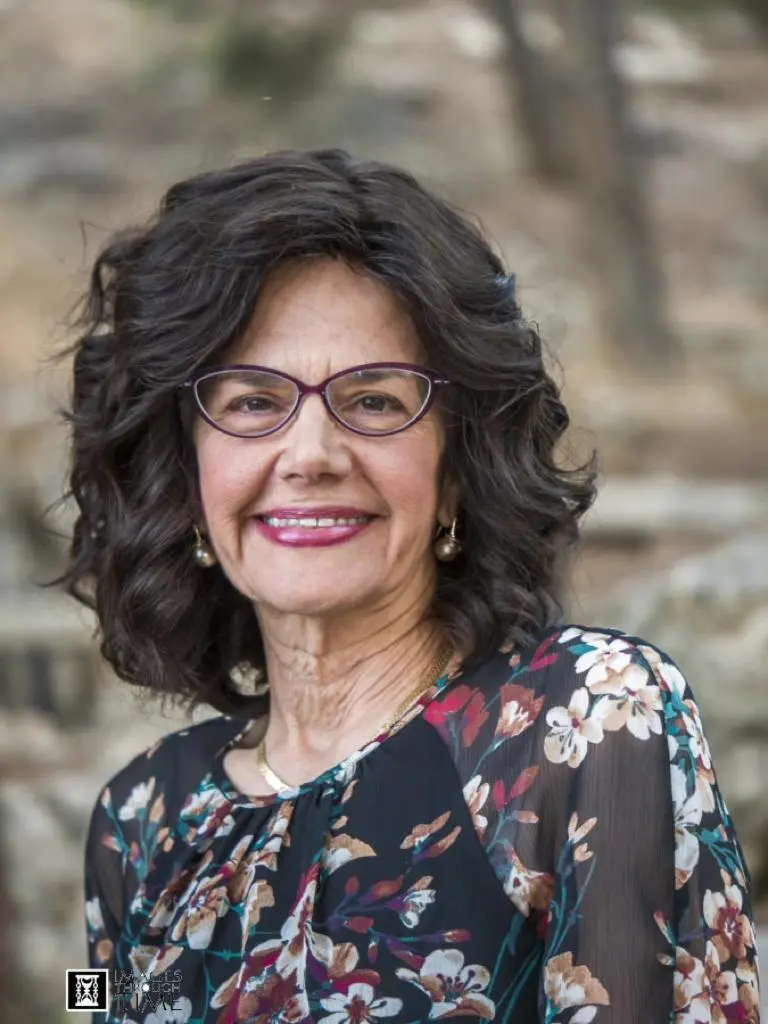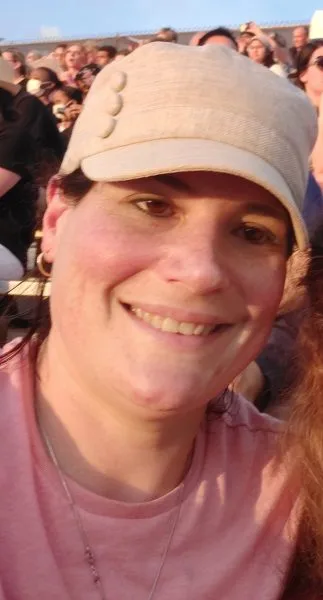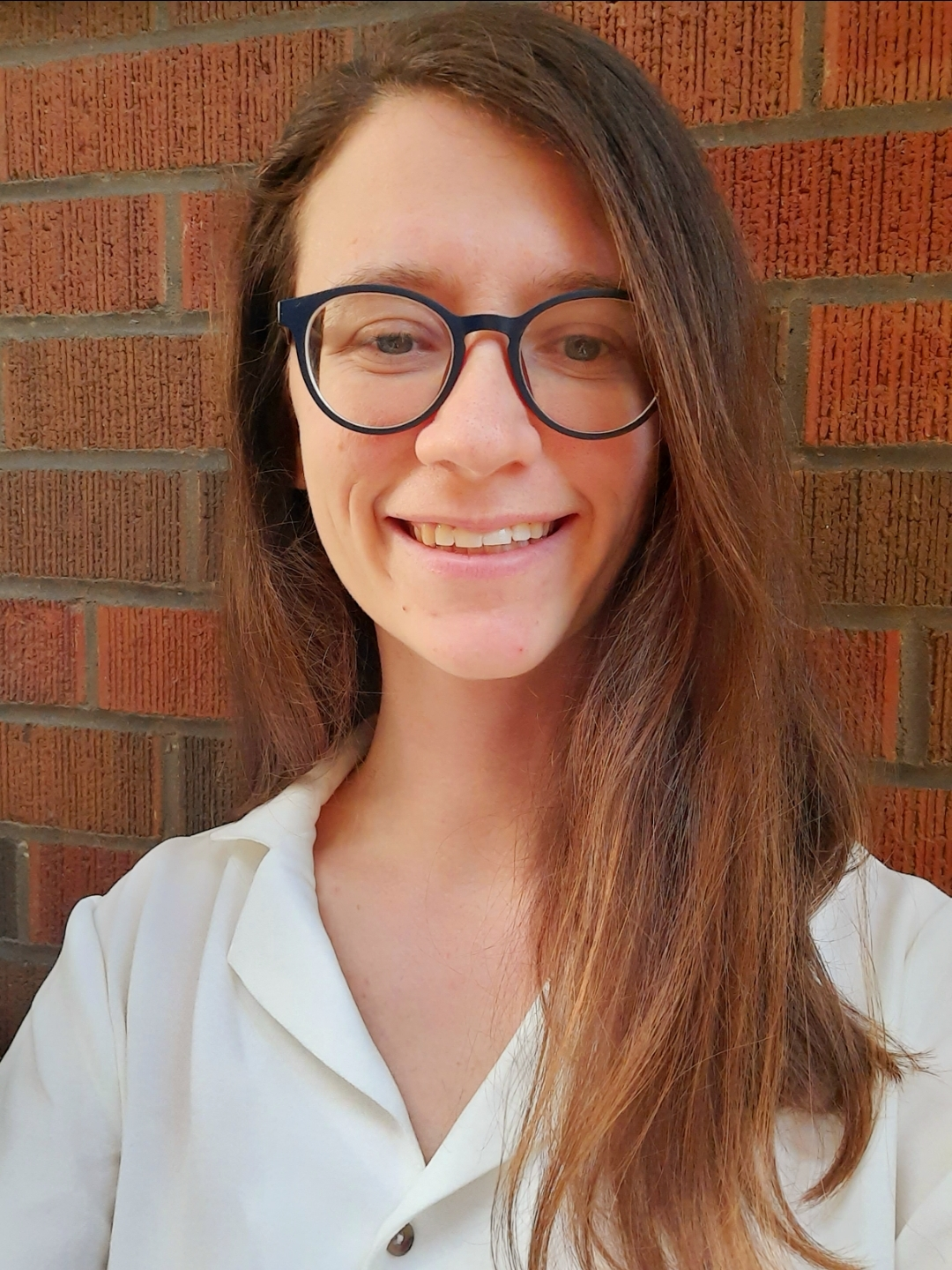How do the three statements of Shmuel works together and can be explained in a way that his statements don’t contradict each other? There is a debate between Rabbi Akiva and Rabbi Yosi HaGalili about why vegetables are not treated like grains, grapes and olives regarding the stage at which maaser and shmita is determined. The Mishna brought a debate between Beit Shamai and Beit Hillel regarding the date for the new year for trees. A case is brought with Rabbi Akiva who was stringent for both opinions and took maaser on an etrog based on two different years. However, Rabbi Yosi bar Yehuda explains the Rabbi Akiva took two different years of maaser not because of the debate between Beit Shamai and Beit Hillel but because of a different debate between Rabbi Eliezer and Rabban Gamliel regarding etrog – is it treated like a fruit or a vegetable for maaser. Questions are raised on each of the two explanations of Rabbi Akiva’s action. If an etrog is treated like a vegetable for maaser, then does the date for the new year follow the date for vegetables or fruits?
Want to dedicate learning? Get started here:
Today’s daily daf tools:
Delve Deeper
Broaden your understanding of the topics on this daf with classes and podcasts from top women Talmud scholars.
New to Talmud?
Check out our resources designed to help you navigate a page of Talmud – and study at the pace, level and style that fits you.
The Hadran Women’s Tapestry
Meet the diverse women learning Gemara at Hadran and hear their stories.
Rosh Hashanah 14
וּצְרִיכָא: דְּאִי אַשְׁמְעִינַן הֲלָכָה כְּרַבִּי שִׁמְעוֹן שֵׁזוּרִי, הֲוָה אָמֵינָא: מִשּׁוּם דְּקָסָבַר יֵשׁ בִּילָּה, קָא מַשְׁמַע לַן: לַכֹּל אֵין בִּילָּה.
The Gemara comments: It is necessary to state all three statements of Shmuel in order to clarify his position, as had Shmuel taught us only that the halakha is in accordance with the opinion of Rabbi Shimon Shezuri, I would have said that this is due to the fact that he holds that there is mixing even with regard to solids. Therefore, he teaches us the second statement, that there is no mixing for anything except wine, oil, and other liquids.
וְאִי אַשְׁמְעִינַן לַכֹּל אֵין בִּילָּה — הֲוָה אָמֵינָא: כְּרַבָּנַן סְבִירָא לֵיהּ, קָא מַשְׁמַע לַן: הֲלָכָה כְּרַבִּי שִׁמְעוֹן שֵׁזוּרִי.
And had Shmuel taught us only that there is no mixing for anything except liquids, I would have said that he holds like the Sages with regard to tithes, that the mixture of cowpeas cannot be tithed together. Therefore, he teaches us that the halakha is in accordance with the opinion of Rabbi Shimon Shezuri.
וְאִי אַשְׁמְעִינַן הָנֵי תַּרְתֵּי — הֲוָה אָמֵינָא: קַשְׁיָא דִּשְׁמוּאֵל אַדִּשְׁמוּאֵל, קָא מַשְׁמַע לַן: הַכֹּל הוֹלֵךְ אַחַר גְּמַר פֶּרִי.
And had Shmuel taught us only these two statements, I would have said in accordance with the opinion of Rabbi Zeira that it is difficult to reconcile one statement of Shmuel with another statement of Shmuel. Therefore, he teaches us that in all cases, the tithe year follows the time of the full ripening of the produce, and it is for this reason that the halakha is in accordance with the opinion of Rabbi Shimon Shezuri.
וְאִי אַשְׁמְעִינַן הַכֹּל הוֹלֵךְ אַחַר גְּמַר פֶּרִי — הֲוָה אָמֵינָא: אֲפִילּוּ תְּבוּאָה וְזֵיתִים נָמֵי — קָא מַשְׁמַע לַן: הֲלָכָה כְּרַבִּי שִׁמְעוֹן שֵׁזוּרִי בְּמַאי דִּפְלִיג.
And had Shmuel taught us only that in all cases the tithe year follows the time of the full ripening of the produce, I would have said that this applies even to grain and olives. Therefore, he teaches us that the halakha is in accordance with the opinion of Rabbi Shimon Shezuri with regard to his dispute with the Sages, i.e., with regard to beans, but with regard to grain and olives the tithe year follows the time that they reach one-third of their growth.
וְלַשְׁמְעִינַן הָנֵי תַּרְתֵּי, לַכֹּל אֵין בִּילָּה לְמָה לִי? הָא קָא מַשְׁמַע לַן, דִּלְיַיִן וָשֶׁמֶן יֵשׁ בִּילָּה.
The Gemara asks: But let him teach us only these two statements, that the halakha is in accordance with the opinion of Rabbi Shimon Shezuri and that in all cases the tithe year follows the full ripening of the fruit, which would suffice to clarify Shmuel’s position. Why do I need to be told that there is no mixing for anything? The Gemara answers: This comes to teach us not that there is no mixing for solids, but that there is mixing for wine, oil, and other liquids.
תַּנְיָא, רַבִּי יוֹסֵי הַגְּלִילִי אוֹמֵר: ״בְּאׇסְפְּךָ מִגׇּרְנְךָ וּמִיִּקְבֶךָ״, מָה גּוֹרֶן וָיֶקֶב מְיוּחָדִין שֶׁגְּדֵילִין עַל מֵי שָׁנָה שֶׁעָבְרָה, וּמִתְעַשְּׂרִין לְשָׁנָה שֶׁעָבְרָה, אַף כֹּל שֶׁגְּדֵילִין עַל מֵי שָׁנָה שֶׁעָבְרָה — מִתְעַשְּׂרִין לְשָׁנָה שֶׁעָבְרָה. יָצְאוּ יְרָקוֹת שֶׁגְּדֵילִין עַל מֵי שָׁנָה הַבָּאָה, וּמִתְעַשְּׂרִין לְשָׁנָה הַבָּאָה.
§ It is taught in a baraita that Rabbi Yosei HaGelili says: The verse states: “After you have gathered in from your threshing floor and from your winepress” (Deuteronomy 16:13). This teaches that just as the grain that is brought to the threshing floor and the wine that is brought to the winepress are special in that they grow on the outgoing year’s water, i.e., the moisture in the ground from the previous winter’s rain, and the halakha is that they are tithed in accordance with the outgoing year, so too, anything that grows on the outgoing year’s water is tithed in accordance with the outgoing year. This comes to exclude vegetables, which grow on the incoming year’s water, as their growth cycle is short and they are nurtured by the rain that falls while they are growing. Consequently, they are tithed in accordance with the incoming year.
רַבִּי עֲקִיבָא אוֹמֵר: ״בְּאׇסְפְּךָ מִגׇּרְנְךָ וּמִיִּקְבֶךָ״, מָה גּוֹרֶן וְיֶקֶב מְיוּחָדִין שֶׁגְּדֵילִין עַל רוֹב מַיִם, וּמִתְעַשְּׂרִין לְשָׁנָה שֶׁעָבְרָה, אַף כֹּל שֶׁגְּדֵילִין עַל רוֹב מַיִם — מִתְעַשְּׂרִין לְשָׁנָה שֶׁעָבְרָה. יָצְאוּ יְרָקוֹת שֶׁגְּדֵילִין עַל כׇּל מַיִם, וּמִתְעַשְּׂרִין לְשָׁנָה הַבָּאָה.
Rabbi Akiva says: This is the way the verse should be expounded: “After you have gathered in from your threshing floor and from your winepress”; this teaches us that just as the grain that is brought to the threshing floor and the wine that is brought to the winepress are special in that they grow on most water, i.e., rainfall is sufficient and they do not require irrigation, and the halakha is that they are tithed in accordance with the outgoing year, so too, anything that grows on most water is tithed in accordance with the outgoing year. This comes to exclude vegetables, which grow on all water, i.e., they require irrigation as well. Consequently, they are tithed in accordance with the incoming year.
מַאי בֵּינַיְיהוּ? אָמַר רַבִּי אֲבָהוּ: בְּצָלִים הַסָּרִיסִין וּפוֹל הַמִּצְרִי אִיכָּא בֵּינַיְיהוּ. דִּתְנַן: בְּצָלִים הַסָּרִיסִין וּפוֹל הַמִּצְרִי שֶׁמָּנַע מֵהֶן מַיִם שְׁלֹשִׁים יוֹם לִפְנֵי רֹאשׁ הַשָּׁנָה — מִתְעַשְּׂרִין לְשֶׁעָבַר וּמוּתָּרִין בַּשְּׁבִיעִית, וְאִם לָאו — אֲסוּרִין בַּשְּׁבִיעִית וּמִתְעַשְּׂרִין לְשָׁנָה הַבָּאָה.
The Gemara asks: What is the practical difference between the opinions of Rabbi Yosei HaGelili and Rabbi Akiva? Rabbi Abbahu said: There is a practical difference between them with regard to seedless onions and cowpeas, as we learned in a mishna: Seedless onions, which are cultivated for their greens and not for their bulbs or seeds, and the cowpea plant, which was planted to be eaten as a vegetable, from which one withheld water for thirty days before Rosh HaShana, so that their green portions stopped growing and they began to grow for seed, are tithed in accordance with the outgoing year, and they are permitted if the new year is the Sabbatical Year. And if not, they are prohibited if it is the Sabbatical Year, and in ordinary years they are tithed in accordance with the incoming year. Therefore, the halakha depends not on the species of plant but on whether the crop is in fact nurtured by the previous year’s water or the new year’s water, and this mishna is taught in accordance with the opinion of Rabbi Yosei HaGelili.
בְּאֶחָד בִּשְׁבָט רֹאשׁ הַשָּׁנָה לָאִילָן. מַאי טַעְמָא? אָמַר רַבִּי אֶלְעָזָר אָמַר רַבִּי אוֹשַׁעְיָא: הוֹאִיל וְיָצְאוּ רוֹב גִּשְׁמֵי שָׁנָה, וַעֲדַיִין רוֹב תְּקוּפָה מִבַּחוּץ.
§ The mishna taught: On the first of Shevat is the new year for trees, according to the statement of Beit Shammai. The Gemara asks: What is the reason that the new year for trees was set on this date? Rabbi Elazar said that Rabbi Oshaya said: The reason is since by that time most of the year’s rains have already fallen, and most of the season, i.e., winter, is yet to come, as it continues until the spring equinox, which usually occurs in Nisan.
מַאי קָאָמַר? הָכִי קָאָמַר: אַף עַל פִּי שֶׁרוֹב תְּקוּפָה מִבַּחוּץ, הוֹאִיל וְיָצְאוּ רוֹב גִּשְׁמֵי שָׁנָה.
The Gemara asks: What is he saying? The Gemara explains: This is what he said: Even though most of the winter season is yet to come, nevertheless, since most of the year’s rains have already fallen, it is considered the end of the previous year of rain, and anything that grows from then on is considered produce of the next year.
תָּנוּ רַבָּנַן: מַעֲשֶׂה בְּרַבִּי עֲקִיבָא שֶׁלִּיקֵּט אֶתְרוֹג בְּאֶחָד בִּשְׁבָט וְנָהַג בּוֹ שְׁנֵי עִישּׂוּרִין,
The Sages taught in a baraita: There was once an incident involving Rabbi Akiva, who picked an etrog on the first of Shevat and set aside two tithes. This occurred in the second or the fifth year of the Sabbatical cycle. In the second and fifth years one sets aside second tithe, whereas in the third and sixth years one sets aside poor man’s tithe. Rabbi Akiva set aside both second tithe and poor man’s tithe because he was in doubt about the halakha.
אֶחָד כְּדִבְרֵי בֵּית שַׁמַּאי, וְאֶחָד כְּדִבְרֵי בֵּית הִלֵּל.
One tithe was in accordance with the statement of Beit Shammai that the new year for trees is on the first of Shevat, in which case it was already the third or sixth year, when one must set aside poor man’s tithe; and one tithe was in accordance with the statement of Beit Hillel that the new year for trees is on the fifteenth of Shevat, so it was still the second or fifth year, when one must set aside second tithe.
רַבִּי יוֹסֵי בַּר יְהוּדָה אוֹמֵר: לֹא מִנְהַג בֵּית שַׁמַּאי וּבֵית הִלֵּל נָהַג בָּהּ, אֶלָּא מִנְהַג רַבָּן גַּמְלִיאֵל וְרַבִּי אֱלִיעֶזֶר נָהַג בָּהּ.
Rabbi Yosei bar Yehuda says: He did not act as he did in order to conform with the conflicting practices of Beit Shammai and Beit Hillel. Rather, he acted as he did in order to conform with the conflicting practices of Rabban Gamliel and Rabbi Eliezer.
דִּתְנַן: אֶתְרוֹג שָׁוֶה לָאִילָן בִּשְׁלֹשָׁה דְּרָכִים, וְלַיָּרָק בְּדֶרֶךְ אֶחָד. שָׁוֶה לָאִילָן בִּשְׁלֹשָׁה דְּרָכִים: לְעׇרְלָה וְלִרְבָעִי וְלִשְׁבִיעִית וּלְיָרָק בְּדֶרֶךְ אֶחָד — שֶׁבִּשְׁעַת לְקִיטָתוֹ עִישּׂוּרוֹ, דִּבְרֵי רַבָּן גַּמְלִיאֵל.
As we learned in a mishna: The etrog tree is like an ordinary tree in three ways and like a vegetable in one way. How so? It is like an ordinary tree in three ways: With regard to orla, that the fruit of the first three years after the tree is planted is forbidden; with regard to fourth-year produce, that the fruit that grows in the fourth year after the tree is planted must be brought to Jerusalem and eaten there or else it must be redeemed; and with regard to the Sabbatical Year, that the year is determined by the time of the formation of its fruit. And the etrog is like a vegetable in one way, which is that its tithe year follows the time of the picking of its fruit; this is the statement of Rabban Gamliel.
רַבִּי אֱלִיעֶזֶר אוֹמֵר: אֶתְרוֹג שָׁוֶה לָאִילָן לְכׇל דָּבָר.
Rabbi Eliezer says: The etrog is like fruit of a tree with regard to all matters, and so its tithe year also follows the time of the formation of its fruit. Since Rabbi Akiva was in doubt whether the halakha is ruled in accordance with the opinion of Rabban Gamliel or Rabbi Eliezer, he set aside two tithes in order to follow both of their opinions.
וּמִי עָבְדִינַן כִּתְרֵי חוּמְרֵי? וְהָתַנְיָא: לְעוֹלָם הֲלָכָה כְּדִבְרֵי בֵּית הִלֵּל, וְהָרוֹצֶה לַעֲשׂוֹת כְּדִבְרֵי בֵּית שַׁמַּאי — עוֹשֶׂה. כְּדִבְרֵי בֵּית הִלֵּל — עוֹשֶׂה. מִקּוּלֵּי בֵּית שַׁמַּאי וּמִקּוּלֵּי בֵּית הִלֵּל — רָשָׁע. מֵחוּמְרֵי בֵּית שַׁמַּאי וּמֵחוּמְרֵי בֵּית הִלֵּל — עָלָיו הַכָּתוּב אוֹמֵר: ״וְהַכְּסִיל בַּחֹשֶׁךְ הוֹלֵךְ״. אֶלָּא: אִי כְּבֵית שַׁמַּאי — בְּקוּלֵּיהוֹן וּבְחוּמְרֵיהוֹן. אִי כְּבֵית הִלֵּל — בְּקוּלֵּיהוֹן וּבְחוּמְרֵיהוֹן.
The Gemara questions Rabbi Akiva’s conduct: But do we adopt the respective stringencies of two authorities who disagree on a series of issues? Isn’t it taught in a baraita: The halakha is always in accordance with the statement of Beit Hillel, but one who wishes to act in accordance with the statement of Beit Shammai may do so, and one who wishes to act in accordance with the statement of Beit Hillel may do so. If he adopts both the leniencies of Beit Shammai and also the leniencies of Beit Hillel, he is a wicked person. And if he adopts both the stringencies of Beit Shammai and the stringencies of Beit Hillel, with regard to him the verse states: “The fool walks in darkness” (Ecclesiastes 2:14). Rather, one should act either in accordance with Beit Shammai, following both their leniencies and their stringencies, or in accordance with Beit Hillel, following both their leniencies and their stringencies. If so, why did Rabbi Akiva follow two contradictory stringencies?
רַבִּי עֲקִיבָא גְּמָרֵיהּ אִסְתַּפַּק לֵיהּ, וְלָא יְדַע אִי בֵּית הִלֵּל בְּאֶחָד בִּשְׁבָט אוֹמֵר, אִי בַּחֲמִשָּׁה עָשָׂר בִּשְׁבָט אוֹמֵר.
The Gemara answers: Rabbi Akiva wished to act in accordance with the opinion of Beit Hillel, but he was in doubt about his tradition and did not know whether Beit Hillel said that the new year for trees is on the first of Shevat or whether they said that it is on the fifteenth of Shevat, and so he set aside two tithes in order to conform with both possibilities.
רַבִּי יוֹסֵי בַּר יְהוּדָה אוֹמֵר: לֹא מִנְהַג בֵּית שַׁמַּאי וּבֵית הִלֵּל נָהַג בָּהּ, אֶלָּא מִנְהַג רַבָּן גַּמְלִיאֵל וְרַבִּי אֱלִיעֶזֶר נָהַג בָּהּ. בְּאֶחָד בִּשְׁבָט — כְּבֵית שַׁמַּאי נָהַג בָּהּ!
The Gemara further clarifies the baraita, which states: Rabbi Yosei bar Yehuda says: He did not act as he did in order to conform with the conflicting practices of Beit Shammai and Beit Hillel; rather, he acted as he did in order to conform with the conflicting practices of Rabban Gamliel and Rabbi Eliezer. The Gemara asks: Seeing that he did this on the first of Shevat, it would seem that he acted in accordance with the practice of Beit Shammai. According to Beit Hillel, both the formation of the fruit and its picking took place in the same year, as the new year does not begin until the fifteenth of Shevat, and so there would have been no need to set aside two tithes.
אָמַר רַבִּי חֲנִינָא וְאִיתֵּימָא רַבִּי חֲנַנְיָא: הָכָא בְּאֶתְרוֹג שֶׁחָנְטוּ פֵּירוֹתָיו קוֹדֶם חֲמִשָּׁה עָשָׂר דְּאִידַּךְ שְׁבָט עָסְקִינַן. וּבְדִין הוּא אֲפִילּוּ קוֹדֶם לָכֵן, וּמַעֲשֶׂה שֶׁהָיָה כָּךְ הָיָה.
Rabbi Ḥanina said, and some say that it was Rabbi Ḥananya who said: Here we are dealing with an etrog tree whose fruit was formed prior to the fifteenth of the other, previous, Shevat, in the second year, and it was picked on the first of the following Shevat, in the third year. According to the opinion of Rabbi Eliezer that the tithe year of an etrog follows the time of the formation of its fruit, the fruit was obligated in second tithe, whereas according to the opinion of Rabban Gamliel that the tithe year of an etrog follows the time of its picking, it was obligated in poor man’s tithe, and so Rabbi Akiva set aside two tithes. And by right it should have taught that even if the fruit had been picked earlier, any time after the fifteenth of the previous Shevat, but the incident that took place, took place in this way, that the fruit was picked on the first of Shevat.
רָבִינָא אָמַר, כְּרוֹךְ וּתְנִי: לֹא אֶחָד בִּשְׁבָט הָיָה — אֶלָּא חֲמִשָּׁה עָשָׂר בִּשְׁבָט הָיָה, וְלֹא מִנְהַג בֵּית שַׁמַּאי וּבֵית הִלֵּל נָהַג בָּהּ — אֶלָּא מִנְהַג רַבָּן גַּמְלִיאֵל וְרַבִּי אֱלִיעֶזֶר נָהַג בָּהּ.
Ravina said: Combine the two statements and teach the baraita as follows: It was not on the first of Shevat that Rabbi Akiva picked the fruit, but on the fifteenth of Shevat, and he did not act as he did in order to conform with the conflicting practices of Beit Shammai and Beit Hillel, but rather, he acted as he did in order to conform with the conflicting practices of Rabban Gamliel and Rabbi Eliezer, both in accordance with the practice of Beit Hillel.
אָמַר רַבָּה בַּר רַב הוּנָא: הַשְׁתָּא דְּאָמַר רַבָּן גַּמְלִיאֵל אֶתְרוֹג אַחַר לְקִיטָתוֹ עִישּׂוּרוֹ כְּיָרָק, רֹאשׁ הַשָּׁנָה שֶׁלּוֹ תִּשְׁרִי.
§ Rabba bar Rav Huna said: Now that Rabban Gamliel has said that the tithe year of an etrog follows the time of the picking of its fruit, like a vegetable, its new year for tithing is Tishrei, like other vegetables.
מֵיתִיבִי, רַבִּי שִׁמְעוֹן בֶּן אֶלְעָזָר אוֹמֵר: לִיקֵּט אֶתְרוֹג עֶרֶב חֲמִשָּׁה עָשָׂר בִּשְׁבָט עַד שֶׁלֹּא תָּבוֹא הַשֶּׁמֶשׁ, וְחָזַר וְלִיקֵּט מִשֶּׁתָּבוֹא הַשֶּׁמֶשׁ — אֵין תּוֹרְמִין וּמְעַשְּׂרִין מִזֶּה עַל זֶה, לְפִי שֶׁאֵין תּוֹרְמִין וּמְעַשְּׂרִין לֹא מִן הֶחָדָשׁ עַל הַיָּשָׁן וְלֹא מִן הַיָּשָׁן עַל הֶחָדָשׁ. הָיְתָה שְׁלִישִׁית נִכְנֶסֶת לִרְבִיעִית — שְׁלִישִׁית מַעֲשֵׂר רִאשׁוֹן וּמַעְשַׂר עָנִי, רְבִיעִית מַעֲשֵׂר רִאשׁוֹן וּמַעֲשֵׂר שֵׁנִי.
The Gemara raises an objection from the following baraita: Rabbi Shimon ben Elazar says: If one picked the fruit of an etrog tree on the eve of the fifteenth of Shevat before the sun had set, and then he picked more fruit after sunset, one may not set aside teruma and tithes from the one for the other, as one may not set aside teruma and tithes from the new crop for the old or from the old crop for the new. If he did this when it was the third year of the Sabbatical cycle going into the fourth year, the halakha is as follows: From what he picked in the third year he must set aside first tithe and poor man’s tithe, and from what he picked in the fourth year he must set aside first tithe and second tithe.






















